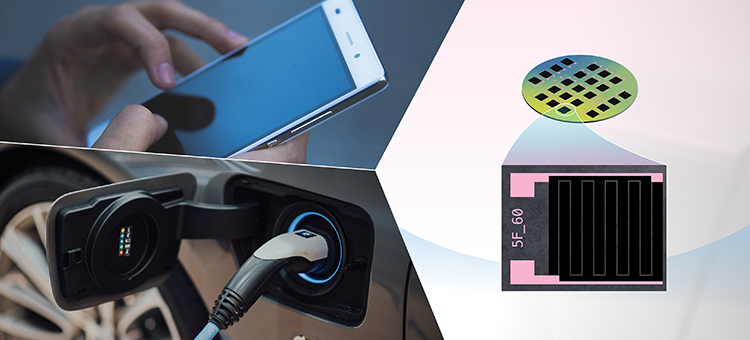Supercapacitors, an increasingly competitive area of research, could revolutionize the way we use batteries by extending their lifespans and enabling extremely fast charging. But given that they need to be same size as the batteries they are connected to, supercapacitors are often too large for most applications in consumer electronics or electric cars.
Now, researchers at Chalmers University of Technology in Sweden have developed a method that represents a potential breakthrough in the production of micro supercapacitors. The method addresses one of the main challenges – their compatibility with other components in a system circuit.
The researchers have developed micro supercapacitors, also known as system-on-a-chip, which are so small that they can fit on the system circuits that control various functions in mobile phones, computers, electric motors, and most consumer electronics goods. They have demonstrated a manufacturing process in which micro supercapacitors are integrated with the most common way to manufacture system circuits: complementary metal-oxide-semiconductor (CMOS).
“We used a method known as spin coating, a cornerstone technique in many manufacturing processes. This allows us to choose different electrode materials,” says Agin Vyas, a doctoral student in the microtechnology and nanoscience department at Chalmers University of Technology. “We also use alkylamine chains in reduced graphene oxide, to show how that leads to a higher charging and storage capacity.”
Micro supercapacitors fabricated through spin coating graphene-oxide often suffer from insufficient electrode thicknesses, leading to low energy densities. However, the researchers have addressed this by using the alkylamine chains for enhanced electrode thickness, high capacitance, and lower series resistance. They said the method is scalable and reduces manufacturing costs.
Their research paper, “Alkyl-Amino Functionalized Reduced-Graphene-Oxide–heptadecan-9-amine-Based Spin-Coated Microsupercapacitors for On-Chip Low Power Electronics,” was recently published in Physica Status Solidi B.
This content is protected by copyright and may not be reused. If you want to cooperate with us and would like to reuse some of our content, please contact: editors@pv-magazine.com.




2 comments
By submitting this form you agree to pv magazine using your data for the purposes of publishing your comment.
Your personal data will only be disclosed or otherwise transmitted to third parties for the purposes of spam filtering or if this is necessary for technical maintenance of the website. Any other transfer to third parties will not take place unless this is justified on the basis of applicable data protection regulations or if pv magazine is legally obliged to do so.
You may revoke this consent at any time with effect for the future, in which case your personal data will be deleted immediately. Otherwise, your data will be deleted if pv magazine has processed your request or the purpose of data storage is fulfilled.
Further information on data privacy can be found in our Data Protection Policy.